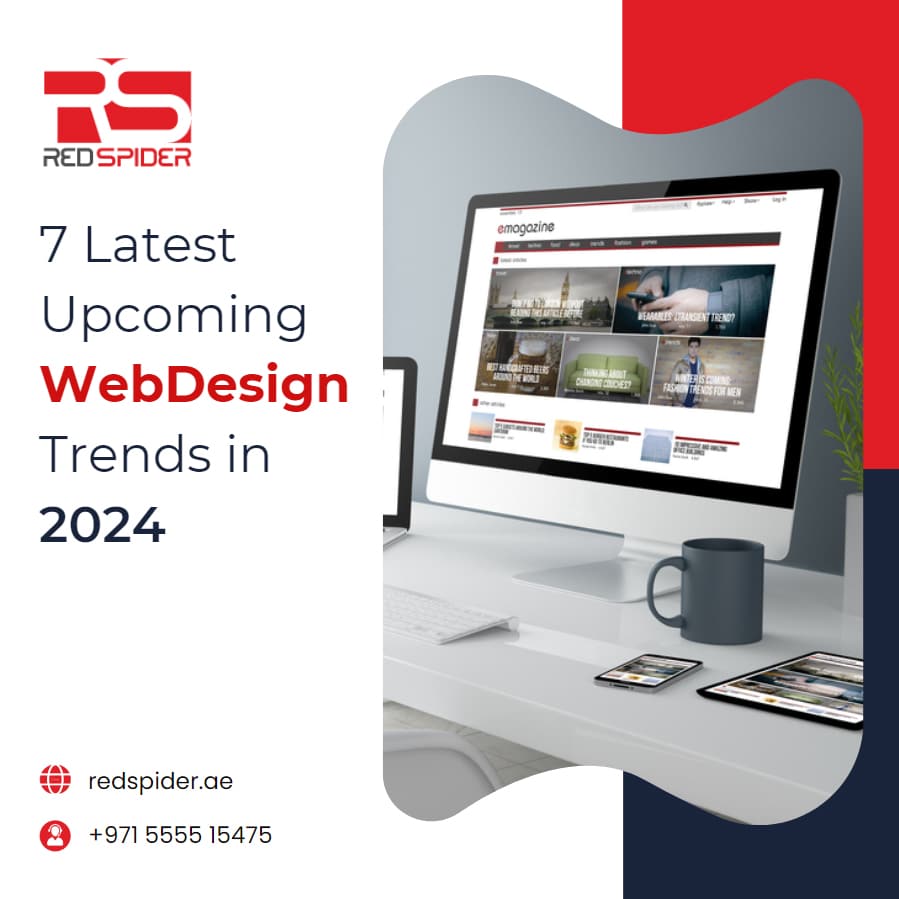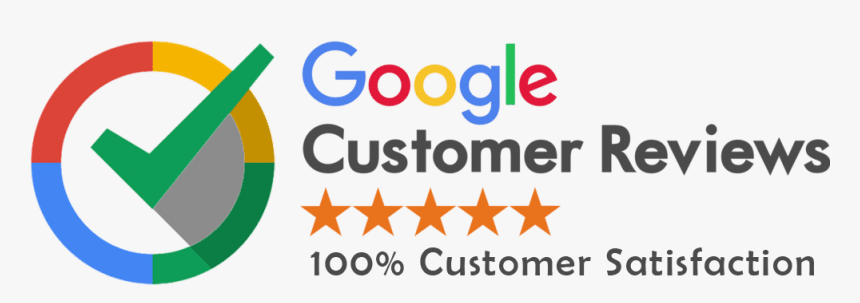As 2023 is ending, let’s look forward to what changes and trends we can expect in Upcoming Web Design Trends in 2024. Some of these trends will build on current design styles, while others will react to them by going in a different direction. When people and designers get tired of a trend, it’s common to see a big change the next year.
Now, let’s see what’s coming up in web design for 2024:
7 Web Design Trends In 2024
Upcoming Web Design Trends in 2024 isn’t just about keeping up with changes; it’s about being at the forefront of a more engaging, interactive, and smart digital future. Knowing and using these trends helps designers, developers, and brands create attractive, useful, and easy-to-use websites.

Sci-Fi-Inspired Design
We’re living in interesting times with advanced technologies like generative AI (like ChatGPT), robot-manned restaurants, smartphones, biometric authentication, and VR headsets. There’s a growing demand for high-tech solutions in both everyday life and professional fields. As a result, we can expect brands in big tech areas like finance and health to design their websites and apps with a more futuristic feel.
Using AI to make personalized graphics from user data and design systems creates a whole new way for people to experience websites. Instead of everyone seeing the same things, websites can now have changing and unique content tailored to each person’s preferences. This makes the designs special and fitting for each user.
Textured Design
Even though AI and Big Tech are becoming a big part of many businesses, lots of people still want the internet to feel real and human.
While tech companies will make their designs look more futuristic, some other brands will do the opposite. Instead of having websites with flat pictures, bright colors, and animations, they’ll add some texture and depth to their designs. Companies that make physical things or offer real-world services will probably be the ones to do this.
Super Simple Design
Here’s another trend in web design that I believe is a reaction to the current styles influenced by AI. Instead of going bold and pushing the boundaries, I think some brands will step back and say, “That’s enough” and return to the basics.
Super simple design doesn’t mean creating websites without color, pictures, or attractiveness. Instead, it’s about embracing space and giving visitors room and time to relax and take in everything. Not every brand will choose this style, but we think we’ll see it a lot on websites for local businesses and individuals.
Smart Headers
Even though having a see-through header looks cool, it’s not always practical. How likely is it that the logo, text, and button will stand out clearly against every background they move across? One solution is to get rid of the sticky header, but that makes it less convenient for users who have to scroll to the top to explore other pages.
Another option is to make the transparent header solid after the visitor goes past the hero section. However, this can disrupt the smooth look of the web design, which is why the header was transparent in the first place. It can also be unpleasant if the header color stands out too much from the rest of the design.
I’ve noticed a new trend that solves this problem. These smart headers change their appearance to match whatever background they move over. While it might not work well for websites with busy images and videos in the background, it’s great for ones with lots of colorful backgrounds.
Multi-planar Scrolling
Usually, when you scroll down a page, everything moves in the same up-and-down direction. Sometimes, the page may pause for a bit while animations happen, but it’s all on that up-and-down line.
Now, there’s something new called biplanar and multiplanar scrolling. As you scroll down a webpage, you might start seeing content that moves not just up and down but also from side to side, like in an old-school Mario game.
Multiplanar scrolling is when the content moves backward or forward, not just up and down. It’s not very common yet, but I think it might become more popular in the future. Picture content getting pushed back while new stuff comes to the front. Or the other way around—things slide off the screen while new content appears from behind.
Handmade Logo Touch
For a bit, it seemed like many logos were becoming too computerized and getting a simple, flat look. This trend started with big tech companies and then everyone else started doing it too.
But in 2024 and beyond, brands will move away from the computerized flat logos and go for something that feels more natural and relatable. Sometimes, a part of the logo, like a letter or shape, will look hand-drawn. Other times, the whole logo will have a hand-drawn appearance.
Easy-to-Read Text Trick
When we create content for websites, a challenge is to not write so much that people don’t want to read it. It’s not that users don’t want to know about what a website is selling; that’s why they’re there. It’s just that people have short attention spans and can feel overwhelmed when given too much information at once.
But sometimes, it’s not possible to write short snippets. Some designers have found a solution for this, and I think we’ll see a lot of it in 2024.
It’s not exactly like a teleprompter, but the result is similar. In a teleprompter, text is slowly shown on a screen while someone speaks. This allows them to talk to the audience as if the words were coming off the top of their heads. With teleprompter typography, the text changes from a not-so-easy-to-read light or semi-transparent to a very readable black and solid as the user scrolls down the page.
Final Thoughts
More trends are Upcoming Web Design Trends in 2024, but if you want some fresh ideas, these are a good place to begin. There’s a groundbreaking trend called teleprompter typography, which helps improve the user experience by solving a common problem. Then there are evolving trends like sci-fi-inspired design, allowing high-tech brands to make their websites look futuristic and impressive.




